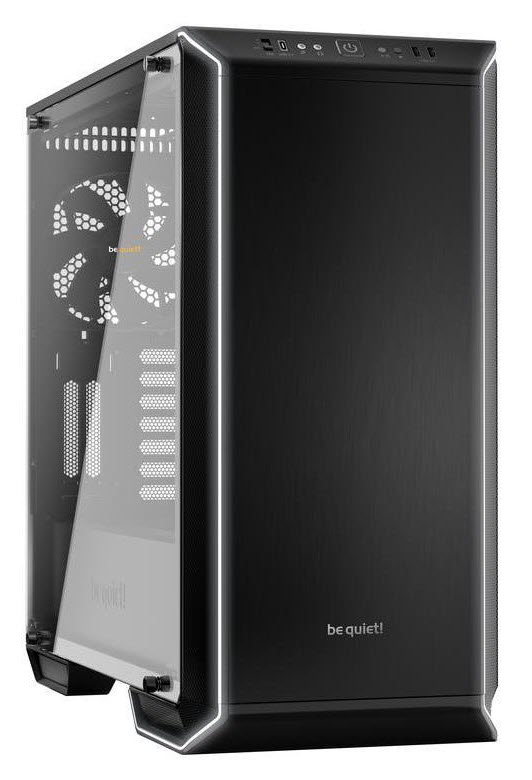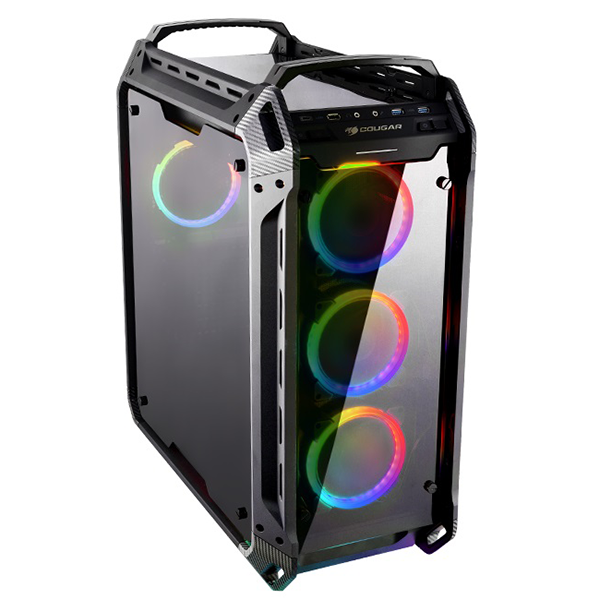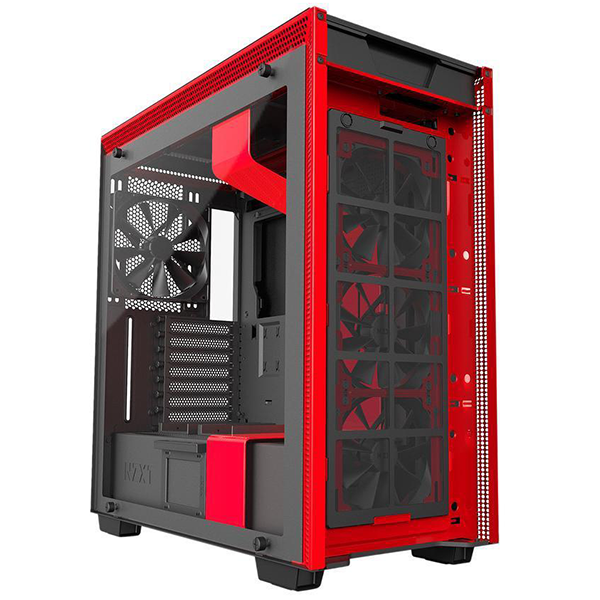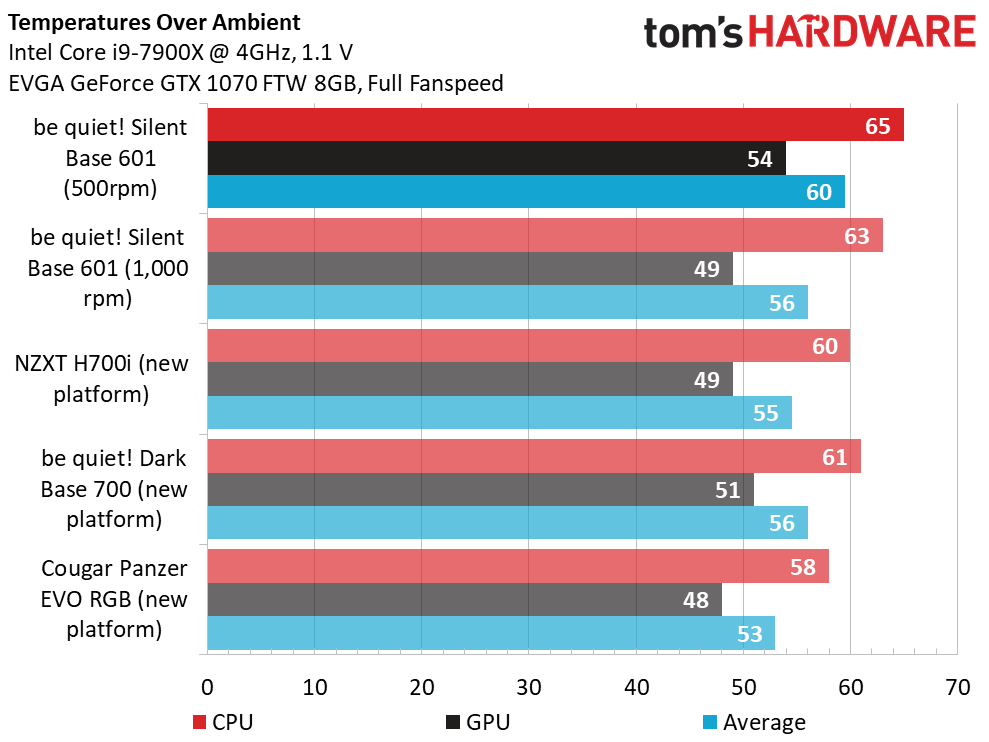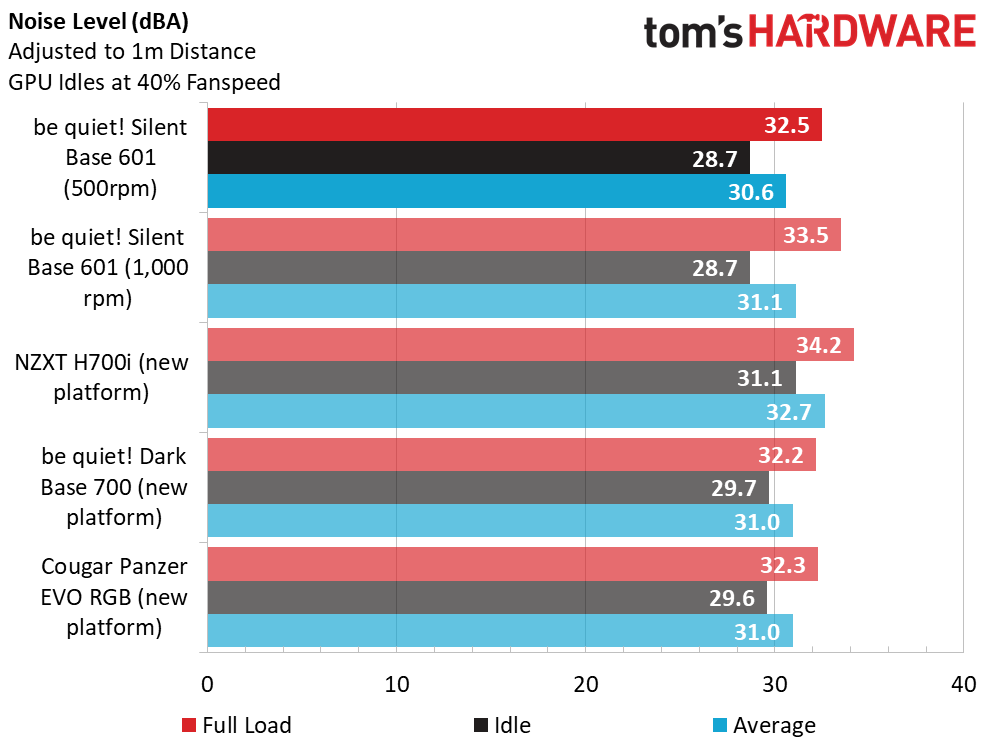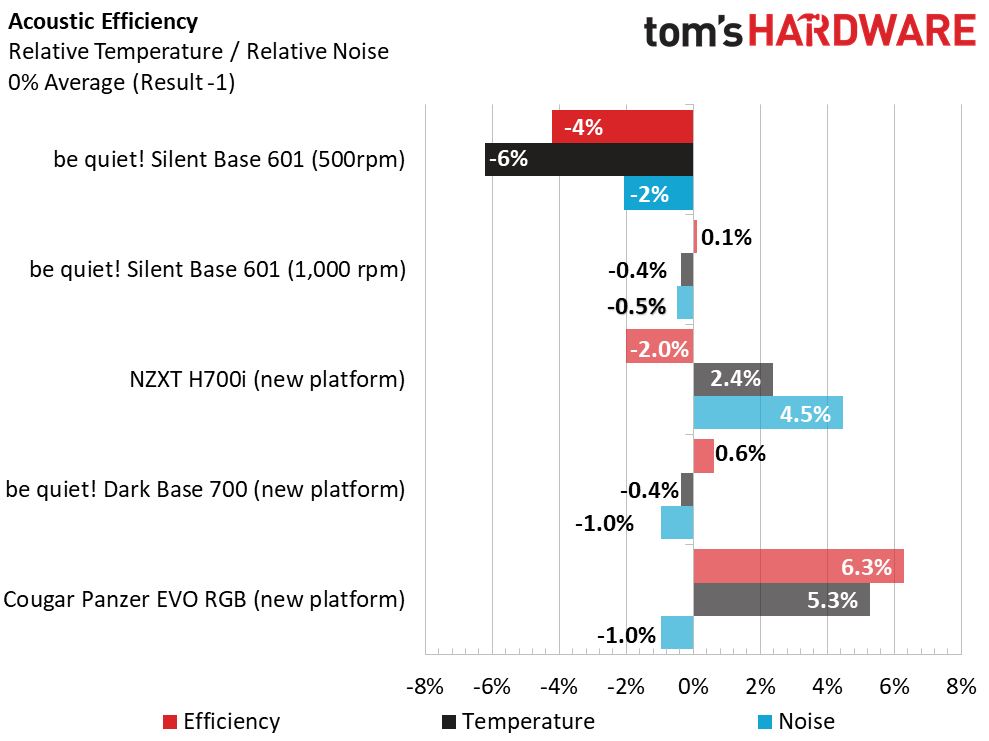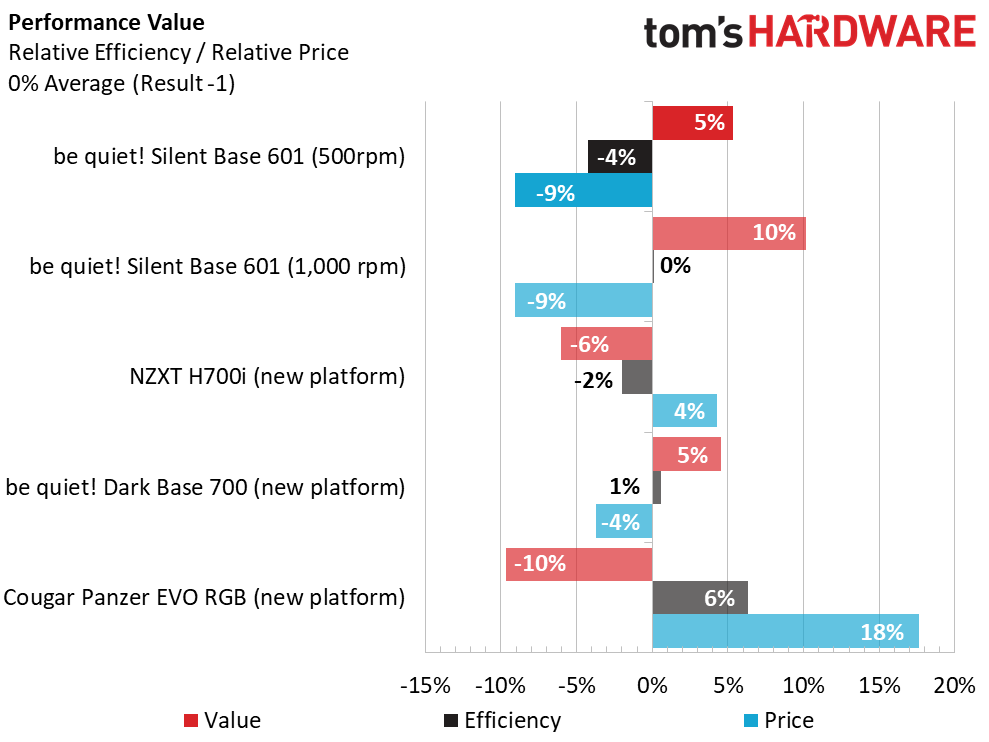be quiet! Silent Base 601 Case Review: RGB-Free Tranquility
Why you can trust Tom's Hardware
Benchmark Results & Conclusion
We tested the Silent Base 601 with our new Intel i9-7900X test platform. For comparison, we brought in the Cougar Panzer EVO RGB, the NZXT H700i and the be quiet! Dark Base 700 to give you a solid idea where this case stands against others of similar size and feature sets. Thermal and audio tests were conducted with the fan speed switch set on low (500 rpm) and then on high (1,000 rpm).
CPU core temperatures on our Intel i9-7900X processor running at 4GHz ran a bit on the high side at 65 degrees Celsius over ambient with the fans set to low. This is no doubt due to the combination of having only one 140mm intake fan and the thick, 10mm, sound-deadening material. Flipping the fan switch to high resulted in a better CPU temperatures, but only by 2 degrees Celsius.
Out of the cases we used for comparison, the Silent Base 601 had the highest overall temperatures. We recommend to anyone running a high-end or overclocked system to add at least one 140mm intake fan.
GPU temps were also high at 54 degrees Celsius but, unlike our CPU temperatures, the graphics card temperature actually benefited a great deal from the boost in fan RPM and the close proximity of the intake fan. With the fan switch on high, GPU temps dropped by a full 5 degrees Celsius.
Now, it's time to see if running the fans on the high setting hurts acoustic performance.
As always, we took sound level readings with two off-the-shelf dB meters from two different angles. With the fan speed switch set on low (500 rpm), our test system registered just 28.7dBA at idle, easily besting the rest of the chassis used for comparison in this review. Under load, we were surprised at just how much sound escaped from the rear of the case. At 32.5dBA, the Silent Base 601 went from being the quietest case in the group to cranking out middle of the pack audio performance. The good news is that after the fan switch was set to high (1,00 rpm), there was only a 1dBA increase under load and no change at idle.
Cooling efficiency and noise levels are both ways to measure performance. Determining acoustic efficiency, also referred to as cooling-to-noise ratio, is a matter of averaging all five of our tests to determine a base value.
Get Tom's Hardware's best news and in-depth reviews, straight to your inbox.
Bottom Line
Although thermal and audio performance could have been better, and the $130 price point ($140 for the windowed version) is a bit higher than other mid-tower ATX cases, the design, features and quality craftsmanship more than make up for those shortcomings. That being said, even though this chassis is less expensive than direct competitors, we believe a $120 price point would elevate this to a deal you just couldn't pass up. But still, Silent Base 601 is a very nice case, even at its current retail price.
MORE: Best Cases
MORE: All Case Content
Current page: Benchmark Results & Conclusion
Prev Page Hardware Installation & Test ConfigurationSteven Lynch is a contributor for Tom’s Hardware, primarily covering case reviews and news.
-
zthomas 601 sort of looks like a Bose speaker, just computer case, what ya wanna bet that roaches still get inside.Reply -
daddywalter Looks like a fairly nice case for use in a cube-farm environment, where system noise would not be a problem. But there are potentially-quieter cases available for less. At least it offers the option of window or no window. I'd consider it for a SOHO build. (I'm not a gamer.)Reply
